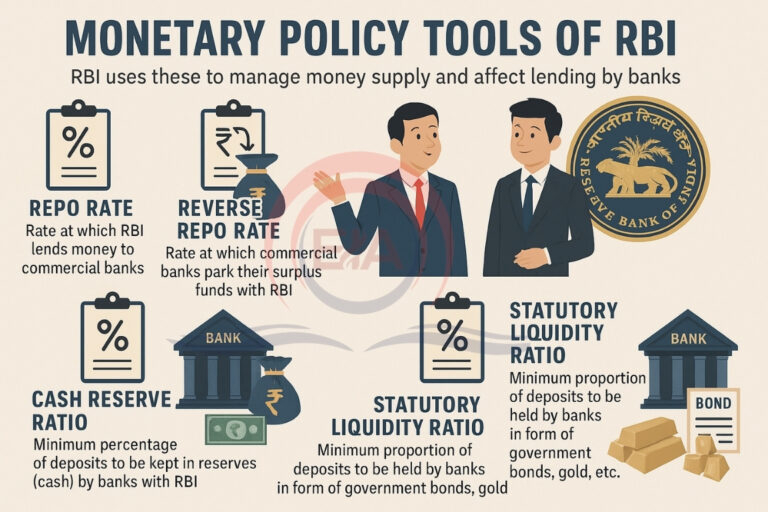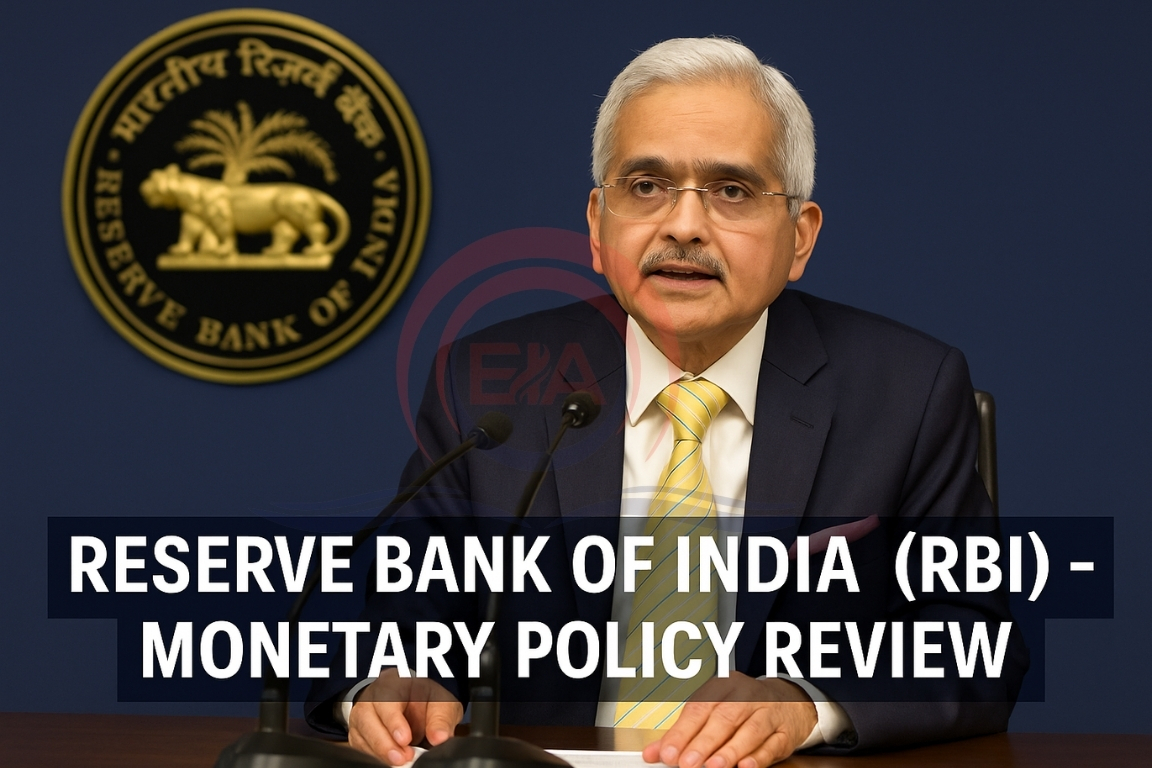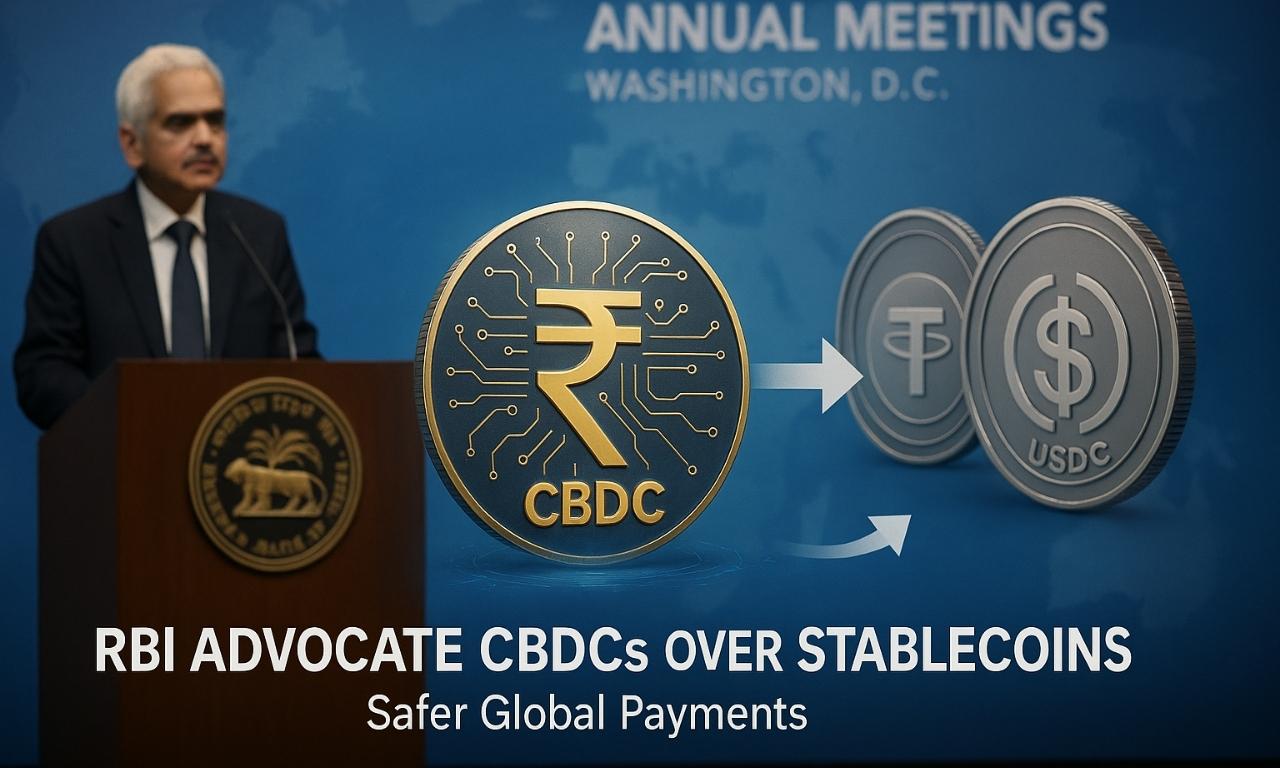The Reserve Bank of India (RBI) decided to pause further interest rate cuts during its recent monetary policy review. This move comes amid ongoing global trade uncertainties, including new tariffs by the U.S. on Indian imports.
Background:
- Since February 2025, the RBI has cut the repo rate by 100 basis points (bps).
- However, in the latest Monetary Policy Committee (MPC) meeting, RBI chose to pause and observe the impact of those cuts.
Reasons for the Pause: Uncertainty in Global Trade:
- U.S. President Trump announced an additional 25% tariff on Indian imports.
- India is still negotiating a bilateral trade deal with the U.S.
- Future tariffs may be imposed due to India’s oil purchases from Russia, affecting India’s global trade position.

Room for Future Action:
- RBI wants to wait for more clarity before taking further monetary action.
- This pause gives time to assess how previous rate cuts are working in the economy.
WHAT IS MONETARY POLICY?
Monetary policy is the process by which the Reserve Bank of India (RBI) controls the money supply and interest rates. Its main aim is to control inflation, ensure economic growth, and maintain financial stability.
- The RBI uses tools like the repo rate, reverse repo rate, CRR, SLR, etc., to manage this.
Key Terms:
- Repo Rate – Rate at which RBI lends money to banks.
- Reverse Repo Rate – Rate at which RBI borrows money from banks.
- CRR (Cash Reserve Ratio) – Portion of banks’ money kept with RBI.
- SLR (Statutory Liquidity Ratio) – Minimum amount banks must invest in government securities.
When Does RBI Increase Rates?
RBI increases repo rate when:
- Inflation is high (prices are rising fast).
- RBI wants to reduce money flow in the economy.
- It wants to control excessive spending.
Impact of Rate Hike:
- Loans become costlier (higher EMIs).
- People and businesses spend less.
- Inflation may reduce.
- Economic growth slows down.
When Does RBI Decrease Rates?
RBI cuts repo rate when:
- Inflation is low or under control.
- Economy needs a push or recovery.
- It wants to encourage borrowing and investment.
Impact of Rate Cut:
- Loans become cheaper.
- People and businesses borrow and spend more.
- Helps in boosting economic activity.
- May increase inflation if overdone.
Is Monetary Policy Working?
Liquidity is Not a Problem: RBI confirmed that there is sufficient liquidity with banks for lending.
Borrowing is Slowing Down:
- Consumer loans (e.g., for durables) fell 3%.
- Home loan growth dropped to 9.6% from 36% last year.
- Vehicle loans also saw a significant slowdown.
- Corporate loans grew by only 5.5%, down from 8.1% a year ago.
Role of the Government:
- RBI Governor stressed the need for stronger policies beyond monetary steps.
- Suggested fiscal actions: GST rationalisation – long overdue. Lower fuel prices – would boost public spending and confidence.
Conclusion:
The RBI is wisely waiting to see the effects of earlier rate cuts.
However, the government must act fast with targeted fiscal policies to revive demand and maintain economic momentum.





